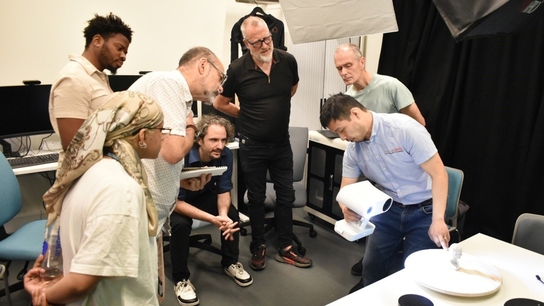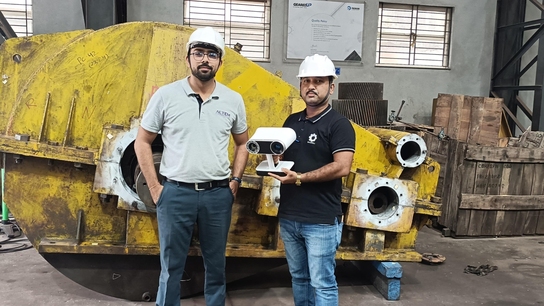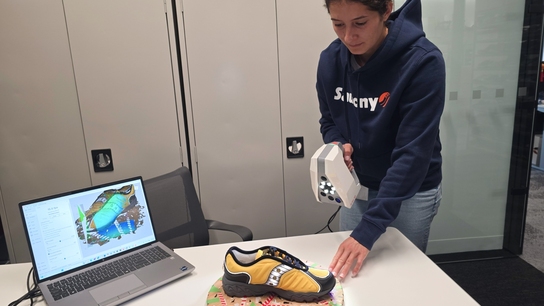Inside look: How ISS offers 24/7 leak repair services with Artec Leo
Challenge: Measuring intricate piping component geometries with high speed and accuracy, so repair clamps can be made without reducing client output or putting technician safety at risk.
Solution: Artec Leo, Artec Studio, SOLIDWORKS
Result: A faster, lower-maintenance workflow for designing custom repair clamps at pace. Now, data can be captured with zero contact in mere minutes, while complete 3D models can be created in just one hour. As well as making life easier for technicians and engineers, ISS’ 3D scanning workflow helps refineries avoid potential environmental damage and cut costs incurred by inactivity.
Why Artec 3D?: Leo is faster, more flexible, and easier to use than its competitors. The company still uses manual measurement for basic geometries, but Artec 3D scanning streamlines complex tasks. Artec Studio software also allows for rapid scan alignment, fusion, decimation, and export to SOLIDWORKS, where custom repair devices are designed.
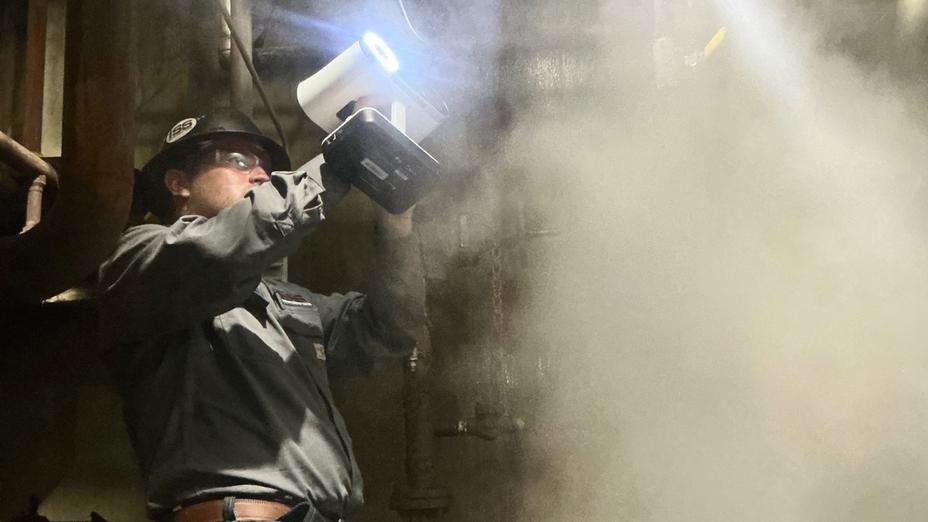
An ISS engineer capturing pipework inside an oil & gas facility using Artec Leo. Image courtesy of Industrial Specialty Services
Fixing leaks in the world’s vast refinery and petrochemical network is no mean feat. Often operating in remote or hard-to-reach locations, refineries and petrochemical plants rely on millions of kilometers of piping and piping components every day.
When components leak, sizing them up for repairs can be extremely difficult – not just due to distance and locale (many are underground or underwater) – but safety issues. If they carry hazardous substances, manual measurement is inherently riskier than non-contact alternatives. Visibility can also be an issue, with steam or process plumes blocking faulty pipes from view.
Likewise, in leak repair, time is of the essence. Bringing tapes, gauges, and calipers out to site may be a time-tested means of measuring pipeline geometry, but it’s time-consuming, difficult to master, and occasionally error-prone. With complex jobs, these problems are only exacerbated, and this is leading many firms to revisit the technology behind their leak repair services.
One such company, Industrial Specialty Services (ISS), is stealing a march on the competition by adopting Artec Leo 3D scanning. At first, the US engineering solution provider explored several options. After careful consideration, the team selected Artec Leo for its speed, flexibility, and ease of use. Since then, ISS hasn’t looked back – its services are now faster & more efficient than ever before.
Adopting Leo for complex tasks
Having recognized the need to digitize its measurement process, ISS initially engaged with external firms offering handheld 3D scanning services. However, these providers lacked familiarity with the unique demands of the leak repair industry. As a result, scans often missed the mark, capturing irrelevant features or using the incorrect resolution.
According to ISS VP of Engineering Chris Larsen, that’s why the firm reentered the market, looking for a scanner that “was going to hit that sweet spot in terms of portability and usability – and wasn’t going to break the bank.” At this point, ISS met with Artec Gold-certified reseller CADTech USA, who introduced its team to the wireless Artec Leo, a point-and-shoot device that’s incredibly easy to use.
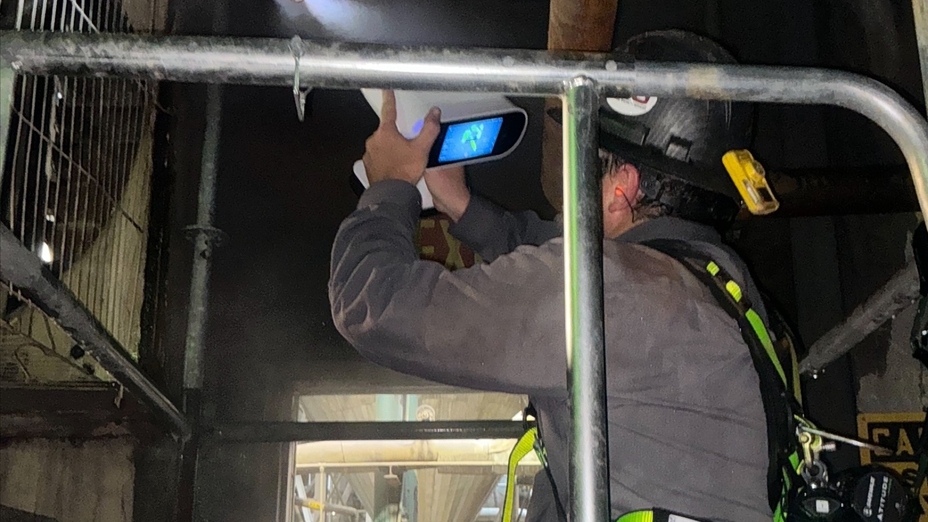
Artec Leo’s built-in display provides real-time feedback during data capture. Image courtesy of Industrial Specialty Services
In certain cases, where only lengths and diameters are required, its engineers can still use manual techniques. But capturing highly complex, irregular, twisted, offset geometries and pipework with multiple landing points is far trickier. This is where Leo excels, enabling them to capture these with the required level of accuracy, faster than other technologies allow.
“Once we have the scan, we can complete a conventional measure up, compare the information from the two measurements, and proceed to manufacturing with confidence,” explained ISS Composite/Leak Repair Service Line Manager, Sean Peters. “This reduces rework, accelerates the engineering process, and helps us deliver components that fit right the first time.”
“Leo reduces the time we spend in the field. What used to take hours with manual measurement tools—along with multiple site visits for verification—can now be captured in one visit.”
Going from scan to enclosure
In many applications, the ISS team can process scans in just one hour before sending the resulting mesh to SOLIDWORKS for reverse engineering. Noisier environments require more scan clean-up, but Artec Studio makes accomplishing this quick and easy.
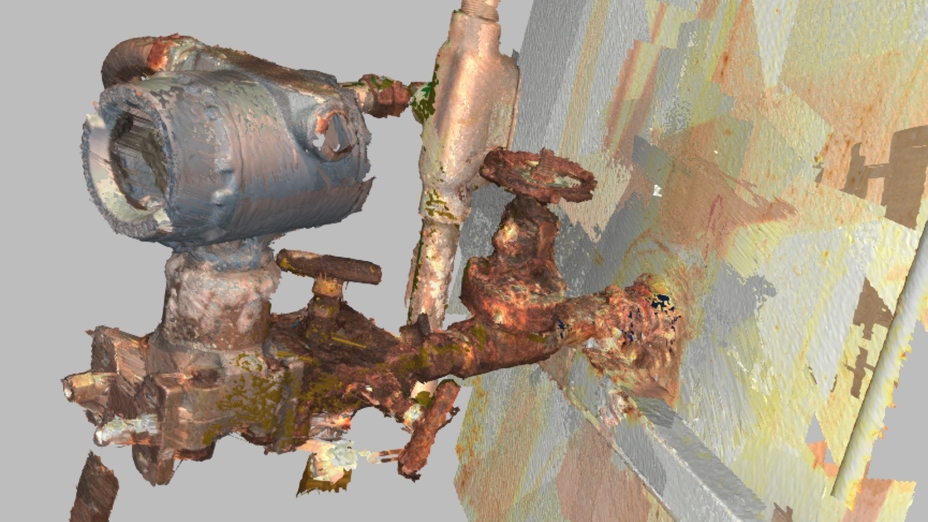
Captured pipeline geometry inside Artec Studio. Image courtesy of Industrial Specialty Services
Inside Artec Studio, users can either manually process data, using smart base removal and auto-alignment to accelerate each step, or activate Autopilot. For ISS, complex tasks necessitate manual excess data deletion. Ultimately, it’s also necessary to reduce polygon count; otherwise, files will become too large, even for the likes of SOLIDWORKS to handle.
After mesh refinement, Artec Studio allows for export in a single click, so data can be used to ensure that enclosures designed elsewhere are fit for purpose. Today, these devices are employed by customers dealing with leaks, and those preemptively maintaining leak-prone areas – both of whom are now able to prevent potential shutdowns.
“We can usually bolt enclosures together around components and inject a sealant that stops the leak. That way, there’s no safety or environmental impact, and they don’t have to shut down,” explained Larsen. “The other use case is when a customer sees piping is thinning, eroding, or corroding to where it appears they may soon have a problem. They can preemptively install an enclosure so that they don’t run any risks.”
Expanding into on-site machining
ISS’ customer base is primarily made up of refineries and petrochemical plants in the Gulf, but it now has locations across the US, where it offers industrial specialty services 24/7, 365 days per year.
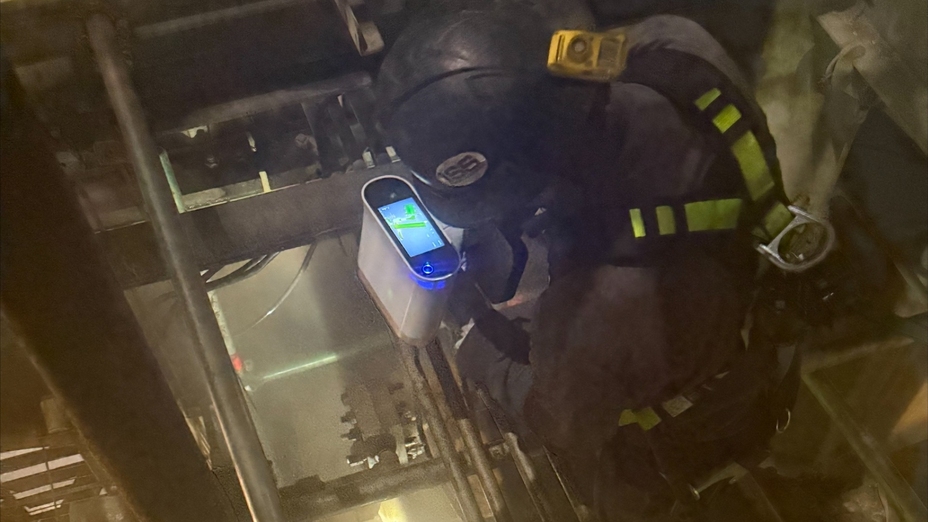
An ISS engineer using Artec Leo while suspended from a harness. Image courtesy of Industrial Specialty Services
Despite the fact that it’s still figuring out how to get the most out of 3D scanning, the company is already making lead time and efficiency gains. As technicians and engineers get more comfortable with the technology, it’s anticipated that further opportunities will emerge. For instance, ISS is working on improving workflow consistency and weighing up Leo’s potential in other on-site applications.
“Once our workflow is fully optimized, I see potential to expand 3D scanning into other areas of the business—especially in our On-Site Field Machining services,” concluded Peters. “Being able to quickly capture precise geometries in the field would make it a lot easier to plan, build fixtures, and execute machining jobs with better accuracy. It could also help with verifying dimensions before and after machining and improving quality control.”
As digital manufacturing continues to take hold in industrial settings, use cases like ISS’ will only become more common. By adopting high-end 3D scanning earlier than oil & gas competitors, the firm has secured its place at the forefront of the industry – and the results speak for themselves. ISS now delivers tailored solutions to customers faster than ever, accelerating the repair of complex piping components where time and precision are critical.
Scanners behind the story
Try out the world's leading handheld 3D scanners.

